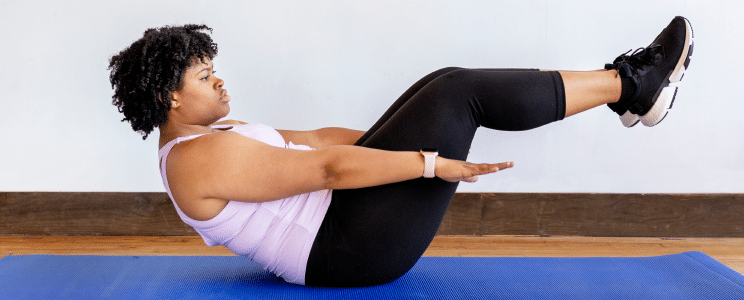Basic tips to help you reach your fitness goals

Low-impact exercise
Many nutrition enthusiasts will swear that eating appropriately is the key to great health. Die-hard exercise addicts will tell you to concentrate on exercising and nutrition can take a back seat. My position is clear on these: we need 100 per cent nutrition and exercise. In simple language, do the best you can in both. Don’t try to get smart or creative and cook up figures such as 60 per cent nutrition and 40 per cent exercise; that is simply an academic endeavour not worth your time.
Over the years, I have come to realise that weight or strength training is probably the king of fitness, and interval training (walking, using a treadmill, etc.) will trounce long hours of same-pace cardiovascular exercise using the same equipment or processes. It only goes to confirm that variety is the spice of life.
1. You may need to talk to a doctor before exercising
a. In general, walking, which in my opinion is the greatest medicine, may not require a doctor’s consent for most people, but remember to vary your pace.
b. It is, however, prudent that those greater than 35 years of age on medication or those with a significant medical condition such as high blood pressure, heart disease, arthritis and asthma see a doctor who may recommend some modifications to their exercise programme.
2. Best time to exercise
a. Just like the commercial “Any time is an ideal time”, you may choose to exercise at any time of the day: morning, afternoon or evening. A few 24-hour gyms exist in some countries, and that implies some people may hit the gym at 2am? Your body will adjust to whatever time of day works for you. Pick a suitable time and get going. In some instances, such as an inability to sleep, a fitness therapist or health professional will like to take advantage of the dip in core temperature four to six hours after exercising. This dip in temperature induces sleepiness, so we may recommend exercising late in the afternoon to help your sleep. This dip in temperature is what makes you feel sleepy at work close to noon when you exercise early in the morning.
3. Duration of exercise
a. There is really no hard-and-fast rule here. The aim is to start with less than 20 minutes and then gradually increase the duration as well as the intensity. If we need to lose weight, we may need to work out longer. It is recommended that we accumulate at least 150 minutes of exercise in a week, which works out to about 30 minutes five days a week. This is great for the heart. Over the next few months, we will learn how interval training may help us to gain the same benefits in less time or how increasing the intensity of your workout could mean spending less time exercising. There is great news for the “busy”: you can gain similar benefits to someone who exercises for 30 minutes at a time by doing three sets of 10 minutes each spread over the day. That eliminates one EXERCISE EXCUSE!
4. Place of hydration in exercising
a. NEVER underestimate the power of exercise to dehydrate you. It is essential that you drink water before, during and after exercising. In most cases, plain water may be adequate, but for those who exercise vigorously for over an hour, you may need more than plain water to keep you going. This is not an endorsement to only drink water when we exercise. Water is an ESSENTIAL drink, often even before you feel thirsty.
5. No Pain, No Gain Is Insane
a. We hear it all the time in gyms, under trees and wherever people with bulging biceps exercise – NO PAIN! NO GAIN! Dear friend, you will feel some discomfort, especially when you start exercising, but if the pain is intense, STOP and ask for help. If the pain persists after a few days, please see a doctor.
6. Warm up and Cool down
a. It is crucial that you warm up for 3–10 minutes before you increase the intensity of your exercise. Warming up increases the heart rate to support your exercise and prepares the muscles for more vigorous exercise. Cooling down will also bring the body to a near-normal state.
b. Skipping the warm-up part can sometimes have lethal consequences. Make it a point to include these two in your schedule.
7. A Complete Exercise Programme
a. To have maximum benefit from exercise, you will need to fall into the “TRINITY” –- cardiovascular exercise (cycling, walking, swimming, etc.), strength training (weight lifting, using resistance bands) and flexibility training (stretching, yoga). Years ago, yoga was couched in “mystery” but now its benefits for fitness are undeniable.
b. In recent years, balance training has jumped into the fray of exercises; it aims to strengthen our core to prevent falls as we age. If you have the benefit of corrective exercise, then you are in luck because it can help you overcome physical challenges and optimise your exercise programme.
c. There is really no strict order for exercising. Cardio before weights or the alternative is not necessary. We will reap the benefits regardless of the order. Order becomes important only when we have certain goals. Someone training for endurance may need cardiovascular exercise first, whereas someone focusing on weight loss may need to switch the order.
8. Increasing Weights in Strength training
a. Take it easy in the beginning and gradually increase your weight. For those of you who will not have the services of a professional, ONLY increase your weights if you can do 12 repetitions of an exercise with good form.
b. Remember, exercising with the wrong form or posture may harm you. It is important that YOU DO NO HARM IN YOUR QUEST FOR FITNESS.
9. Vigorous versus Moderate Intensity Exercise
a. Surely we are able to reduce the duration of our exercise by increasing the intensity. You may walk for one hour but only run for 30 minutes to gain the same cardiovascular benefits, but be careful; you may be putting a strain on another part of the body.
b. You may have come across the fact that mild to moderate exercise improves our immunity and can reduce the frequency of illnesses such as the common cold, whereas extreme exercise may actually cause the opposite.
10. Spot Reduction; fact or myth?
a. Those of us with “pot bellies” know the drill. You walk into a gym and ask how long it will take to trim the belly you have grown lovingly (that rounded belly is an indicator of impending wahala). Some people swear that they can perform out-of-the box exercises and drink certain concoctions to target fat in specific areas.
b. As far as current knowledge can confidently confirm, “spot reduction” is a myth. You will not be able to target specific parts of your body for fat loss; you will need to exercise and eat appropriately to lose fat in the whole body.
Staying fit has never been easy, but the benefits are so amazing that we should all do everything possible to embrace fitness.
AS ALWAYS LAUGH OFTEN, ENSURE HYGIENE, WALK AND PRAY EVERYDAY AND REMEMBER IT’S A PRICELESS GIFT TO KNOW YOUR NUMBERS (blood sugar, blood pressure, blood cholesterol, BMI)
Dr. Kojo Cobba Essel
Health Essentials Ltd/ Mobissel
(dressel@healthessentialsgh.com)
*Dr. Essel is a medical doctor, holds an MBA and is ISSA certified in exercise therapy, fitness nutrition and corrective exercise. He is the author of the award-winning book, ‘Unravelling The Essentials of Health & Wealth.’
Thought for the week – “Safety like Charity begins at home; make sure you get adequate sleep, exercise, eat right, have your eyesight checked and your numbers in the right place. Ensure your home is also safe, then and only then can you easily translate SAFETY to the workplace and everywhere else.” – Dr. Kojo Cobba Essel
References:
1. webmd.com
2. Cobba’s First Law of Exercising – “Do No Harm”
3. Nutrition: The Complete Guide – Ryan Berardi, PhD, Ryan Andrews, MS/MA, RD














